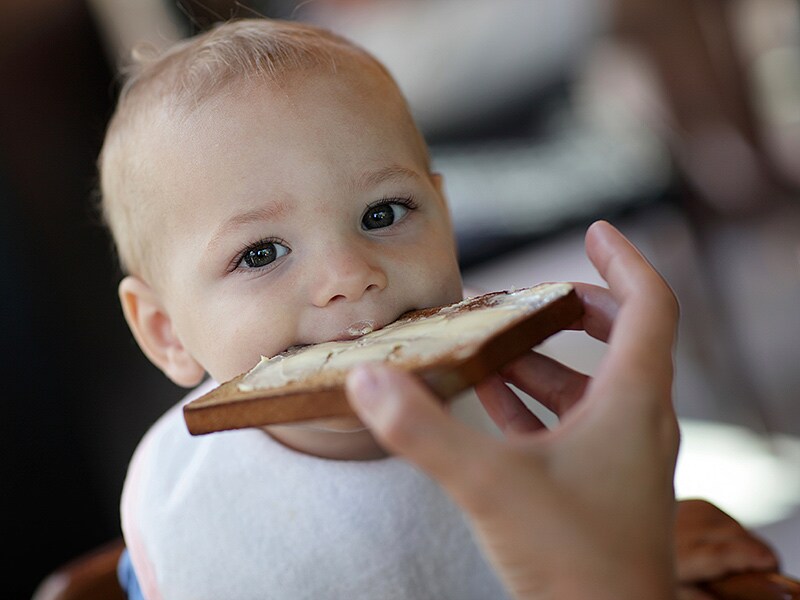Baby food peanut butter
When Can Baby Have Peanut Butter (and 3 Best Ways to Offer It)
When can baby have peanut butter? That’s such a common question among us parents, and it’s normal to be worried about allergic reactions. Thankfully, there are easy ways to offer peanut butter to a baby and simple tips to keep in mind when introducing it for the first time.
When can baby have peanut butter?
The American Academy of Pediatrics recommends that potentially allergenic foods are introduced early on when starting solids at 6 months. This advice has changed recently and family members may not realize that it’s not advised to wait until a child turns 1 any longer.
In fact, waiting can actually increase the likelihood of a reaction.
How to Introduce Peanut Butter to a Baby Step-by Step
According to the National Institute of Allergy and Infectious Diseases, start by considering which group your child falls into:
- They have severe eczema and/or an egg allergy.
In this case, talk with your doctors about peanut allergy testing and testing a peanut product for the first time in their office. Babies in this group are advised to get their first peanut product between 4-6 months.
- They have mild or moderate eczema. Talk to your doctor, but it is likely safe to introduce peanut products around the 6 month mark.
- They have no signs of eczema or food allergies. Offer peanut products soon after starting solids as you introduce all sorts of other foods.
TIP: Talk to your pediatrician about any concerns you have, at any time. If you are at all worried, you can always introduce a peanut product in their office with their supervision to alleviate your stress. Just talk to them about your plan ahead of time.
How soon would peanut allergy symptoms appear?
Typically, they appear soon after introducing the food. Symptoms of a peanut allergy may include anaphylaxis (which is the most severe), but also things including vomiting, indigestion, diarrhea, wheezing, repetitive coughing, tightness in the throat, hives, swelling in the mouth, and more.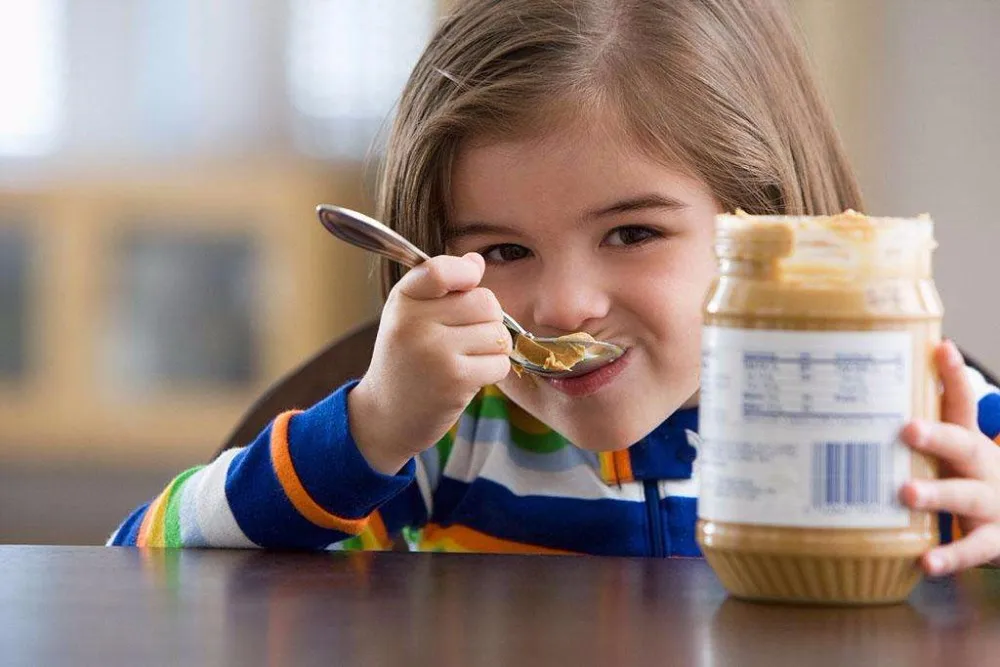
Diagnosing any food allergy can be complicated, so your best bet is to see a pediatric allergist.
TIP: The good news is that research has shown up to 20 percent of individuals with a peanut allergy eventually outgrow it.
Best Peanut Butter for Babies
Look for a peanut butter without added sugar and opt for creamy to ensure that the texture is smooth for baby. I like Smucker’s Natural Peanut Butter, Whole Foods 365 Store Brand, and Teddies.
There are lot of other options available, so just check the ingredients and look for one without added cane sugar or honey.
How to Avoid Choking With Peanut Products
The simplest way to avoid choking is to never offer actual whole peanuts. You should also avoid chunky peanut butter which will be difficult (and potentially dangerous) for a baby and avoid spoonfuls of straight peanut butter which can get stuck in their mouths.
See below for safe peanut options for baby.
What are the best ways to introduce and serve peanut butter to babies?
I have three favorite ways that I will outline below. They include:
They include:
- Peanut Butter Toast
- Peanut Butter Puffs
- Peanut Butter Puree
TIP: I recently saw a tip about grinding nuts into a powder to mix into other foods like oatmeal, which is a great option too. For the first time you offer it, it may make sense to limit the other foods in the same meal so you can be sure to be able to easily isolate the cause if there’s a reaction.
Peanut Butter Toast for Baby
A simple way to offer peanut butter to baby is to spread a very thin layer onto a piece of lightly toasted bread. This is a classic baby led weaning approach where you cut the toast into a piece that’s at least as big as your finger so it’s way too big for the baby to put the entire thing into their mouth.
This is easy for a baby, even one as young as 6 months, to pick up and suck on. (This also works really well with mashed hard cooked egg yolk!)
TIP: Do be sure to lightly toast the bread to reduce the chances that a piece of soft bread will get stuck onto the roof of their mouth.
Peanut Butter Puffs
Another easy way to offer peanut butter to a baby or toddler is to use store-bought peanut butter puffs. The most commonly known one is called Bamba Puffs and Puffworks Baby also makes one. You can find them at Trader Joe’s and on Amazon. They are my favorite because they are big enough for a baby to suck on without putting the entire thing into their mouth.
Peanut Puffs from Mission Mighty Me are a nice options once babies develop their pincer grasp around 9 months.
TIP: The great thing about these is that they dissolve easily in baby’s mouth, are easy to hold, and are a healthy snack food you can continue serving through toddlerhood.
Peanut Butter Puree for Baby
My very favorite way to introduce peanut butter for the first time is to make it into a fluffy puree. It’s so easy, it’s good, and it’s very nutritious with health fats and protein. It’s a perfect no-cook baby food to make at home.
Ingredients You Need for Peanut Butter Puree
To make this puree, you just need natural creamy peanut butter and water. The water helps to fluff up the peanut butter making it into a yogurt-like consistency.
The water helps to fluff up the peanut butter making it into a yogurt-like consistency.
It’s smooth, flavorful, and can be stored for later too.
How to Make Peanut Butter Puree Step-by-Step
Here’s a look at how to make a simple peanut butter puree for a baby.
- Add peanut butter and water to a bowl.
- Start stirring together.
- Keep stirring together as the water begins to look cloudy.
- Keep stirring together until the mixture is a uniform texture and color.
TIP: Room temperature peanut butter and/or warmish water make this come together a little more easily than cold peanut butter.
Best Tips for Peanut Butter and Baby
- Store any peanut butter puree leftovers in an airtight container in the fridge for up to 5 days.
- Keep stirring if the mixture looks separated. It may take a full minute or more of stirring until the mixture comes together.
- If it seems thick or sticky, thin it out more with additional water.

- Choose creamy natural peanut butter without added sugar.
- Offer a small amount on a spoon or spread a thin layer onto a 1-2 finger-size piece of toast.
- Stop feeding baby when they turn their head away and close their mouth. (The serving size below is just a ballpark guess.)
- Consider a peanut puff like the ones from Puffworks Baby.
- If baby has or had eczema or other food allergies, check with your pediatrician for guidance on introducing food allergens.
Related Recipes
I’d love to hear your feedback on this, so please comment below to share!
Prep Time 5 minutes
Cook Time 0 minutes
Total Time 5 minutes
Author Amy Palanjian
Cuisine American
Course Baby Food
Calories 24kcal
Servings 4 -6
- ▢ 1 tablespoon creamy natural peanut butter (without added sugar if possible)
- ▢ 2-3 tablespoons water
Add the peanut butter and 2 tablespoons water to a bowl.

Stir until the mixture starts to come together and the color and consistency are uniformly light and somewhat fluffy. This will take a little bit of time so keep going if and when the peanut butter separates.
Add water as needed to make a fluffy puree consistency.
Offer on a spoon to baby in small amounts or spread onto a 1-2 finger-size piece of toast.
Peanut Butter
Mixing Bowl
Storage Containers
- Store any leftovers in an airtight container in the fridge for up to 5 days.
- Keep stirring if the mixture looks separated. It may take a full minute or more of stirring until the mixture comes together.
- If it seems thick or sticky, thin it out more with additional water.
- Choose creamy natural peanut butter without added sugar.
- Offer a small amount on a spoon or spread a thin layer onto a 1-2 finger-size piece of toast.
- Stop feeding baby when they turn their head away and close their mouth.
 (The serving size below is just a ballpark guess.)
(The serving size below is just a ballpark guess.)
Calories: 24kcal, Carbohydrates: 1g, Protein: 1g, Fat: 2g, Saturated Fat: 1g, Polyunsaturated Fat: 1g, Monounsaturated Fat: 1g, Sodium: 19mg, Potassium: 26mg, Fiber: 1g, Sugar: 1g, Calcium: 2mg, Iron: 1mg
Tried this recipe?Rate in the comments and tag @yummytoddlerfood on IG!
This post was first published August 2020.
How to Feed Peanut Butter to Baby
=This post is sponsored by the National Peanut Board.
Turning six months was a big milestone for our sweet baby boy. He started crawling forward on his half birthday, cut two teeth, began pulling himself to standing and started solid foods. He’s still our happy go lucky baby and it’s been fun to watch him discover new things, especially as we begin our baby led weaning journey.
Brooks was teething around 5 to 5 ½ months, so I started out offering him frozen breast milk pops in our favorite silicone feeders. This was our first step into solids for both of my boys because it gets them used to putting “food” they already love in their mouth. Not to mention it provides comfort for the teething pain too. Win-win for both of us!
This was our first step into solids for both of my boys because it gets them used to putting “food” they already love in their mouth. Not to mention it provides comfort for the teething pain too. Win-win for both of us!
At the 6 ½-month mark, here’s a line-up of foods he has “tasted”, in developmentally appropriate forms of course.
- Avocado
- Banana
- Mango
- Butternut squash
- Carrots
- Apples
- Watermelon
- Pears
- Spinach
- Prunes
- Blueberries
- Peanut butter
- Strawberries
- Peaches
- Cottage cheese
- Beef
- Asparagus
- Sweet potato
- Chia seeds
- Full fat plain yogurt
- Kale
- Lentils
- Brown Rice
- Tomatoes
When can babies have peanut butter?
We don’t have any food allergies in our family but as a new mom it can be nerve-wracking to serve your tiny baby foods from the top allergen list, which was once on the no-no list. However, for babies at high risk for peanut allergy, early introduction is even more important because it can reduce risk of developing an allergy to peanuts by 80%.
However, for babies at high risk for peanut allergy, early introduction is even more important because it can reduce risk of developing an allergy to peanuts by 80%.
How to keep your baby safe when feeding peanut butter to baby?
According to the guidelines, if your child has severe eczema or already has egg allergy, it’s important to discuss introducing peanut products with your doctor before baby’s first bite.
Not only will this give you peace of mind, but also if your baby is at high risk for food allergies your doctor may recommend allergy testing first and early introduction under medical supervision. If your baby isn’t in this category, it’s not necessary to discuss with your pediatrician first, but you can always do that if you prefer.
When giving peanut-containing foods to your baby, it’s important to remember whole peanuts should never be given as they are a choking hazard for babies, and lumps of peanut butter can be dangerous because it’s thick and sticky, so be sure that peanut butter is always properly thinned.
To read more about home feeding safety, check out these guidelines from National Institute of Allergy and Infectious Disease and preventpeanutallergies.org is a great resource too!
How to give baby peanut butter?
I use a modified baby led weaning approach to feeding, and so far, Brooks has ‘teethed” on foods that he can’t currently break with his gums, like large carrot sticks, big pieces of steak, and very firm apple sticks.
He’s eaten purees and smashes like avocado and sweet potatoes from a self-feeding spoon or on his tray table. He also loves squeeze pouches! And his favorite method of getting food into his mouth is via frozen foods (using the silicone feeder), so this is how we introduced peanut butter— a blended smoothie, frozen in an ice cube tray and served in the feeder. Be sure to check out the video for his reaction to peanut butter.
Again, feeding babies is a highly individual process. What works for us may or may not work for you or someone else you love, so it’s important to follow your baby’s developmental and readiness cues and feed peanut butter to baby in appropriate forms, and in a way that makes you feel comfortable.
Looking for how to feed peanut butter to baby?
Here are eight of our favorite ways to introduce peanut-containing foods to an infant.
- Puree. The easier the better at our house. Oh, you too? We’re on the same page mama! Mix your babe’s favorite fruit or veggie puree with peanut butter powder. If you’re introducing peanut butter to the early eater, purees make a seamless and safe method. If you’re doing baby led weaning approach or have an independent eater, dip your baby feeding spoon into the puree and offer it to baby.
Prep it: Mix ¼ cup pureed pears (or favorite food) with 2-3 teaspoons powdered peanut butter.
- Frozen. A quick blend of spinach, peanut butter, mango, banana, and either water or expressed milk; served to baby through a straw or frozen into popsicle molds or ice cube trays and popped into silicone or mesh feeders. Great recipe for even your earliest eaters! We offered these pops in a silicone feeder to my 6 month old baby as his first peanut butter food.

Prep it: Blend 1 cup spinach, 1 tablespoon peanut butter, ½ cup frozen mango, 1 banana and ½ cup expressed milk or water. Pour into popsicle molds, ice cube trays or serve with a straw.
Prep it: In a bowl, stir together ½ cup whole milk yogurt, ¼ cup canned pumpkin puree, 3 tablespoons peanut butter powder, and a pinch of cinnamon.
Prep it: Prepare your favorite baby oatmeal or cereal with strawberries (diced, mashed, or pureed), and sprinkle with a little PB powder. Give it a stir and dunk with a spoon to serve to your baby.
- Drizzle. Stuffed Sweet Potatoes with PB drizzle is a mama and baby favorite at our house. Sweet potatoes stuffed with banana, wild blueberries, and drizzled with a peanut butter + maple syrup and hot water mixture.
Prep it: Cook sweet potato in microwave for 5 minutes or until very soft. Split open with a knife and stuff with banana slices (or smash), wild blueberries (for older babies that can have more texture or muddled in with banana to mash into a puree). In a small bowl, mix together 2 teaspoons of peanut butter with a 2 teaspoons of hot water and a teaspoon of maple syrup. Drizzle thinned peanut butter over sweet potato.
In a small bowl, mix together 2 teaspoons of peanut butter with a 2 teaspoons of hot water and a teaspoon of maple syrup. Drizzle thinned peanut butter over sweet potato.
Prep it: Preheat oven to 375 degrees F; line baking sheet with parchment paper. In a mixing bowl, stir together ½ cup raw oats, ½ cup pureed butternut squash, ¼ cup peanut butter, and ½ teaspoon cinnamon. Roll into 12 even cookies and smash with a fork. Bake for 12 minutes; allow to cool before serving to baby.
Prep it: Make your favorite pancake recipe! In a small bowl whisk together 2 teaspoons peanut butter and 2 teaspoons hot water. Add water 1 teaspoon at a time until you reach a light and fluffy consistency. Keep in mind, depending on the brand some peanut butters need more water to reach desired texture.
- Sauce. Soft pulled chicken is a more advanced food for older infants, but if your babe is already enjoying poultry, try adding a little peanut butter twist! Coconut milk, turmeric, chicken and peanut butter– 4 simple ingredients create a dish your whole family is sure to love.

Prep it: In a slow cooker or Instant Pot, add one can coconut milk, 1 tablespoon ground turmeric, 1 pound chicken, and ¼ cup peanut butter; give it a stir. Close lid and cook on low for 6 hours in slow cooker and on poultry setting (12 minutes on high pressure) in the Instant Pot. When chicken is fully cooked, remove from pot and shred into appropriate size pieces for your baby. Stir remaining sauce in the pot to create a creamy texture; pour sauce on pulled chicken before serving.
I’d love to know, how did you first introduce peanut butter to your baby?
Hope these how to feed peanut butter to baby tips help with your early introduction adventures!
Looking for more posts on babies and motherhood?
-
20 Pre Workout Snacks to Fuel Busy Mom’s on the Go
-
Bump date 33 Weeks: Best and Worst Things about Pregnancy (so far)
-
Birth Story: I had a baby on an elevator
Kristina LaRue, RDN
Hi I’m Kristina LaRue, RD (registered dietitian nutritionist), Peloton addict and mama to two active and hungry boys. On Love & Zest, you’ll find healthy-ish recipes that fuel the whole family. I’m all about veggie-filled breakfast, meal prep recipes, healthier sweets, and easy weeknight dinners made in the Instant Pot or sheet pan.
On Love & Zest, you’ll find healthy-ish recipes that fuel the whole family. I’m all about veggie-filled breakfast, meal prep recipes, healthier sweets, and easy weeknight dinners made in the Instant Pot or sheet pan.
Did you make one of my recipes?? Leave a review in the comments and tag @loveandzest #loveandzest on Instagram!
If you’re a modern mama– I’d love for you to join my Facebook group A Modern Motherhood Collective!
www.loveandzest.com
Sharing is caring!
Fear of allergies - feed your baby peanut butter
1909
Bookmark
Professor Alan Boobis of Imperial College in London and his colleagues found that the inclusion in the diet peanut butter babies - which was previously considered one of the the most controversial products in baby food - capable of reduce the risk of developing allergic reactions in the future by up to 80%. Baby nutrition experts are rethinking their relation to this product. About the results of the study tells BBC News.
About the results of the study tells BBC News.
Allergy is considered one of the most common diseases modernity. For example, according to statistics, since 2008 in the USA the number of people affected by this disease has increased by four times. A similar picture is observed today in most Western world, as well as in some regions of Asia and Africa.
Previously, people introduced peanuts into the diet of young children very carefully - as a rule, not earlier than three years, since it was considered allergenic product.
The authors of the new study advise:
give children with allergies or severe diathesis peanut products at the age of 4-6 months under medical supervision
include foods in the diet of children with mild diathesis, containing peanuts from 6 months
children without allergies or diathesis use peanuts at any time time.
“We expect that the widespread implementation of these medical recommendations will prevent the development of peanut allergy in many susceptible children and ultimately reduce the prevalence peanut allergies in the United States,” said Dr.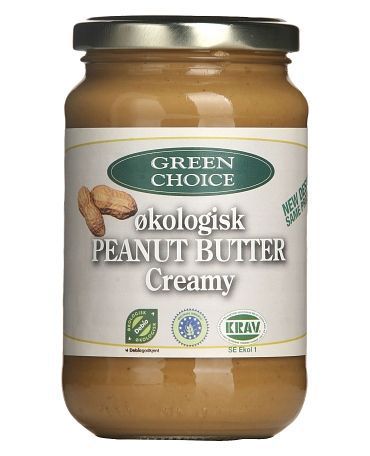 Anthony Fauci, director of the National Institute of Allergy and infectious diseases (USA).
Anthony Fauci, director of the National Institute of Allergy and infectious diseases (USA).
Michael Walker, Fellow of the European Academy Allergology and Clinical Immunology, tells: “Recommendations are based on reliable medical research, held in the UK. Parents should consult your pediatrician if necessary, before trying to prevent peanut allergy in your child."
In the UK, new guidelines for child nutrition are still are under consideration, but Professor Bubis advises parents follow them now: "The former view, according to which delaying the introduction of allergenic foods reduces the risk of food allergies seems to be incorrect. Anyway, exclusion or untimely introduction of specific allergenic foods can only increase the risk of food allergies, including including peanuts,” he said.
Earlier portal Scientific Russia already wrote about a similar study in which 11 children “rescued” from allergies by eating peanuts at an early age.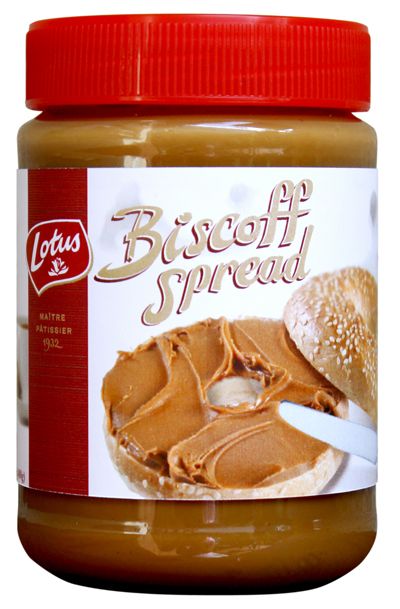
allergens allergy peanut peanut butter
Information provided by the Information Agency "Scientific Russia". Mass media registration certificate: IA No. ФС77-62580, issued Federal Service for Supervision of Communications, Information Technology and Mass Communications on July 31, 2015.
PEANUTS OIL
Description
DESCRIPTION
is a vegetable product obtained from peanut (peanut) beans, by crushing fruits, using cold-pressed technology.
South America is considered the birthplace of peanuts, which is confirmed by archaeological research of the 12th-15th centuries. Peanuts were brought to Europe from Peru in the sixteenth century by the Spanish conquistadors. Later it was brought to Africa and North America, and then to China, India and Japan. Peanuts appeared in Russia in 1825.
In today's world, peanut vegetable oil is widely used in all countries due to its beneficial properties and nutritional value. The composition of peanut butter mainly includes proteins, fats and carbohydrates, as well as vitamins and minerals. Its calorie content is about 900 kcal.
Its calorie content is about 900 kcal.
There are three types of peanut butter - unrefined, refined non-deodorized and refined deodorized.
Unrefined oil, or oil of primary cold pressing, passes only mechanical filtration from litter and particles left after grinding the beans. The result is a brownish oil, which has a specific aroma and taste, but it is not very suitable for frying, as it quickly burns and releases soot. This oil has a very limited shelf life and should be stored in a dark, cool place.
Refined deodorized oil goes through several stages of processing - from filtration to complete purification from all impurities, pesticides and oxidation products - using modern technologies such as hydration, refining, neutralization, freezing and deodorization. This pomace has a light yellow color and does not have an aroma and a pronounced taste, but is great for frying. This oil is used in household and industrial cooking, as well as in cosmetics and pharmaceuticals.
Refined non-deodorized oil goes through the same processing steps as deodorized oil, except for the last one - deodorization, i.e. steam vacuum removal of aromatic substances. This oil also has a yellowish color and, like deodorized oil, it is widely used in Europe and America.
CHEMICAL COMPOSITION OF PEANUTS OIL
Peanut oil consists of a large number of useful substances, such as:
- easily digestible fats
- acids (Omega-6, Omega-9, stearic, lignoceric, etc.)
- vitamins (groups B, A, E, D)
- minerals (calcium, magnesium, potassium, iron, zinc, iodine, etc.)
- phospholipids
- betaines
The presence, in the pomace, of a group of polyunsaturated acids helps the immune system, heart and blood vessels to work without interruption. Thanks to Omega-6 and Omega-9, the functioning of the reproductive and nervous systems improves.
It is worth noting the fact that the peanut product normalizes the level of hormones and the amount of cholesterol in the blood.
Vitamins A and E are an excellent source of antioxidants that perform many beneficial functions:
- blood vessel health
- youthful and firm skin
- vision improvement
- boosting immunity
- healing of damage to the integrity of the skin
- inflammation relief
Vitamin B complex is essential for healthy skin, hair and nails. It strengthens the immune system and improves eyesight. B1-B5, B8 and B9participate in the following metabolic processes:
- carbohydrate
- protein
- lipid
- water-salt.
Vitamin D is a unique element that is not found in every product. But he is responsible for such important processes as:
- growth and regeneration of bone tissue
- strengthening immunity
- cancer prevention
- prevention of cardiovascular and endocrine diseases
APPLICATIONS OF PEANUT OIL
For medical purposes, the oil is used to eliminate problems associated with internal organs and systems.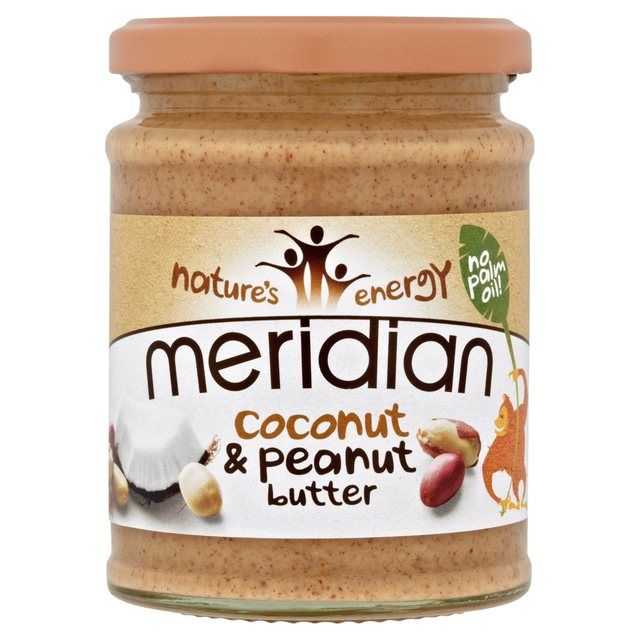
It is not difficult to guess that due to the rich number of useful components, the oil is popular in folk medicine. It is used to treat diseases of many systems and organs:
- nervous
- cardiovascular
- blood
- liver
- bile ducts
- digestive tract
- diabetes mellitus
It is enough to introduce unrefined peanut oil into the daily diet, and many ailments will disappear with time. This measure will avoid atherosclerosis, hypertension, strokes, heart attacks.
Peanut oil helps with depression, frequent insomnia, severe fatigue, bad mood. It is enough to take one teaspoon of peanut pomace three times a day.
Unrefined liquid is indispensable for skin problems. Peanut oil kills bacteria, reduces inflammation and heals perfectly. Squeeze copes with purulent wounds, herpes, eczema, diathesis, hematomas.
In addition, the oil has a positive effect on the skin of the face and neck:
- softens
- feeds
- moisturizes
- enhances collagen production
- makes her firm
- stops the aging process
- restores protective functions
Peanut butter replaces many body care products.